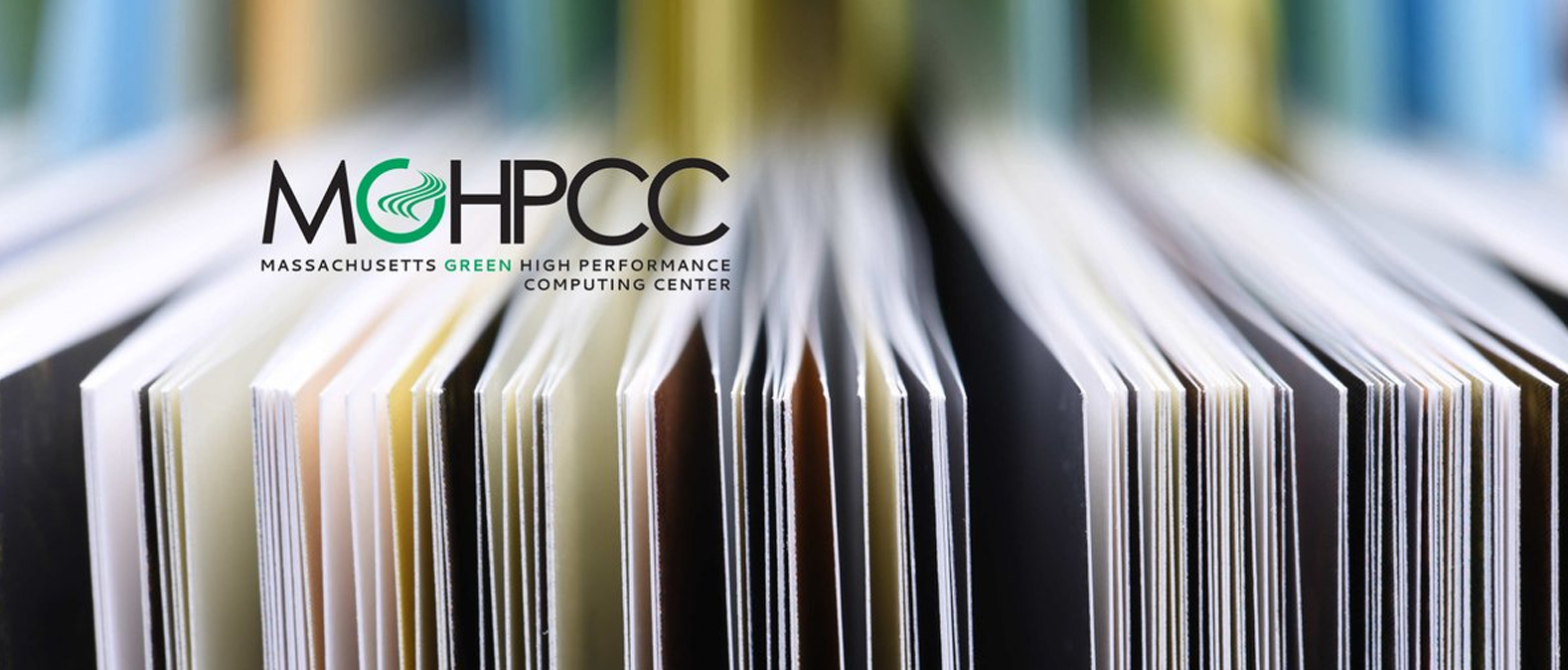
Rydberg atom arrays? Vibrionic photoexcitation? CMOS compatible sputtering techniques? This month's selection of publications featuring research using the MGHPCC.
Simon Axelrod et al (2022), Learning Matter: Materials Design with Machine Learning and Atomistic Simulations, Accounts of Materials Research, doi: 10.1021/accountsmr.1c00238
Nirjhar Bhattacharjee et al (2022), Topological Antiferromagnetic van der Waals Phase in Topological Insulator/Ferromagnet Heterostructures Synthesized by CMOS-Compatible Sputtering Technique, Advanced Materials, doi: 10.1002/adma.202108790
Kevin C. Courtney et al (2022), The complexin C-terminal amphipathic helix stabilizes the fusion pore open state by sculpting membranes, Nature Structural and Molecular Biology, doi: 10.1038/s41594-021-00716-0
Sarah Dunton et al (2022), Determining metrics for broadening participation in computing: Connecting data to multi-state computer science education policy efforts, Policy Futures in Education, doi: 10.1177/14782103211064443
S. Ebadi et al (2022), Quantum Optimization of Maximum Independent Set using Rydberg Atom Arrays, arXiv: 2202.09372 [quant-ph]
Victoria O.Fasiku et al (2022), A hyaluronic acid-based nanogel for the co-delivery of nitric oxide (NO) and a novel antimicrobial peptide (AMP) against bacterial biofilms, International Journal of Biological Macromolecules, doi: 10.1016/j.ijbiomac.2022.02.099
Steven Finch (2022), Second Best, Third Worst, Fourth in Line, arXiv: 2202.07621 [math.CO]
Benjamin E. Grossman-Ponemon, Ataollah Mesgarnejad, Alain Karma (2022), Phase-field modeling of continuous fatigue via toughness degradation, Engineering Fracture Mechanics, doi: 10.1016/j.engfracmech.2022.108255
Song Luo et al (2022), Titrating Controlled Defects into Si-LTA Zeolite Crystals Using Multiple Organic Structure-Directing Agents, Chemical Materials, doi: 10.1021/acs.chemmater.1c04036
Nicholas Marcella et al (2022), Decoding reactive structures in dilute alloy catalysts, Nature Communications, doi: 10.1038/s41467-022-28366-w
A. Levi and D. Sasselov (2022), Partitioning of Atmospheric O2 into High-pressure Ice in Ocean Worlds, The Astrophysical Journal, doi: 10.3847/1538-4357/ac4500
Hassiel Negrin-Yuvero et al (2022), Vibronic Photoexcitation Dynamics of Perylene Diimide: Computational Insights, J. Phys. Chem. A, doi: 10.1021/acs.jpca.1c09484
Stephanie O’Neil, Josh Borrow, Mark Vogelsberger and Benedikt Diemer (2022), The impact of galaxy selection on the splashback boundaries of galaxy clusters, arXiv: 2202.05277 [astro-ph.GA]
Nashwan Sabti, Julian B. Muñoz, and Diego Blas (2022), Galaxy luminosity function pipeline for cosmology and astrophysics, Phys. Rev. D, doi: 10.1103/PhysRevD.105.043518
Xuejian Shen, et al (2022), X-ray morphology of cluster-mass haloes in self-interacting dark matter, arXiv 2201.00038 [astro-ph.CO]
Mohammadrasoul Taghavi et al (2022), Multifunctional metasails for self-stabilized beam-riding and optical communication, Nanoscale Advances, doi: 10.1039/D1NA00747E
Methodios Ximerakis et al (2022), Heterochronic parabiosis reprograms the mouse brain transcriptome by shifting aging signatures in multiple cell types, bioRXiv, doi: 10.1101/2022.01.27.477911
Do you have news about research using computing resources at the MGHPCC? If you have an interesting project that you want to tell people about or a paper you would like listed, contact